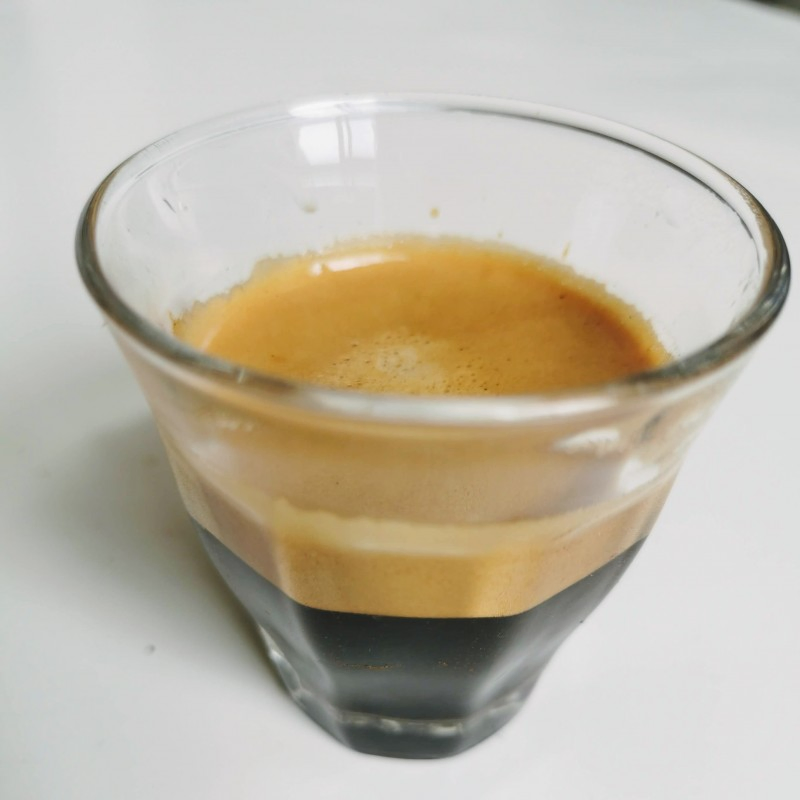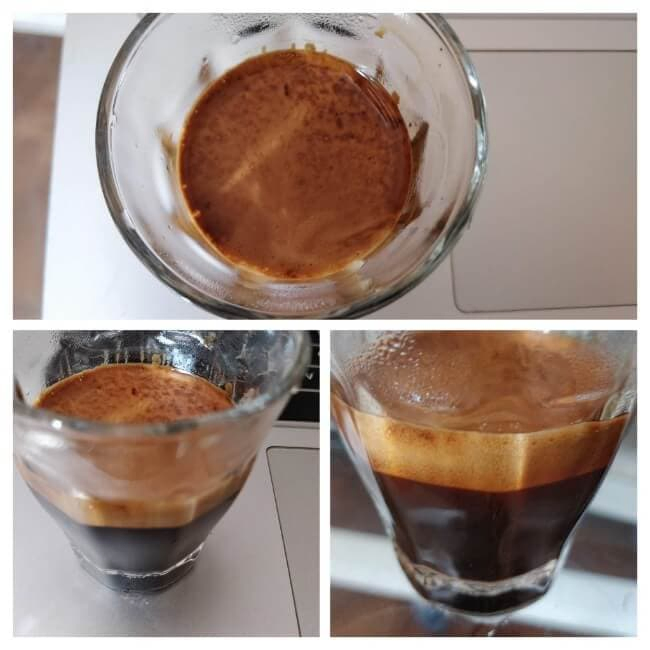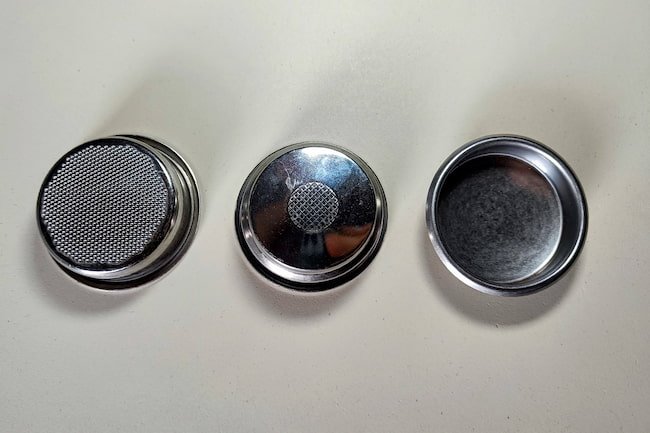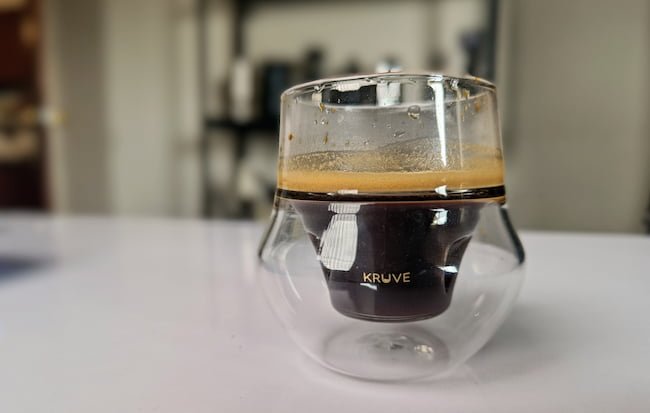Crema… 🫗
That rich, velvety layer on top of a well-pulled espresso, is now facing a similar fate as many traditional staples in the modern world.
Many things that were once accepted as the norm are now being scrutinized.
Similarly, crema, once a symbol of quality in Italian espresso culture, has come under fire in recent years, with some even advocating for its removal.
In this article, we dive into the science and purpose behind this revered and reviled golden-brown substance and tell you how you can get more (or less) depending on your preferences.
What Is Crema?
The short explanation is that crema is the foamy layer that forms on top of a freshly brewed espresso.
The more scientific version is that when coffee beans are roasted, carbon dioxide (CO2) is trapped within the cellular structure of the bean. During the grinding and brewing process, this CO2 is released and trapped by surfactants in the brewed espresso. There are several compounds in the coffee bean that act in this way, but probably melanoidins – a protein that is created during the roasting process – are the most important type. Crema is actually a colloidal suspension.
This kind of mix is sometimes known as emulsification. However, while colloids and emulsion are often used interchangeably, there are some technical differences, and not all colloids are emulsions.
💡 Cheat sheet: How to get more crema
- Use the right gear: Always use a real espresso basket/portafilter, not the pressurized version that often comes with entry-level espresso machines.
- Use an espresso blend: While you can make espresso with many different types of coffee, you stand a better chance of getting epic crema, if you have an espresso blend that contains robusta. Blends are typically roasted darker, which yields a thicker and more dramatic-looking crema.
- Look at the roast date: Ensure that you use a fresh roast. Generally, the fresher the beans, the more crema you can expect. Using beans less than 6 weeks old will yield the best results.
The role of crema in espresso
Crema plays a significant role in the overall espresso experience, adding both flavor and texture to the final product.
It’s an indication that the beans are fresh and that the barista has done his/her job.
Also, it’s a physical phenomenon that separates espresso from all other types of coffee. The only thing that can rival it in terms of exoticness is the much rarer and new invention, nitro-coffee.
As you sip the espresso, the crema adds a velvety texture and a slight bitterness that complements the other flavors in the shot.
The role of crema in latte art?
However, crema also serves a crucial function when pouring latte art Here’s why:
A good crema layer is essential for creating that beautiful contrast and depth in latte art. The darker crema acts as a canvas for the lighter milk foam and helps the pattern to stand out.
The crema also helps to keep the foam in place, which is super important when you’re trying to create those fancy designs that require a lot of pouring skills.
Plus, the crema adds a nice texture to the latte art, making it velvety and smooth.
So yeah, the crema is pretty essential for making your latte art look professional.

Factors That Affect Crema
Crema can be influenced by several factors, ranging from the quality of the coffee beans to the roast and grind size. Let’s explore how these factors can impact the crema in your espresso.
Coffee bean quality
- Freshness: The freshness of coffee beans plays a crucial role in crema formation. Fresher beans contain more trapped CO2, which is released during grinding and brewing. The presence of more gases results in a thicker and more stable crema.
- Robusta vs. Arabica: The type of coffee beans also affects crema production. Robusta beans tend to produce more crema than Arabica beans due to their lower lipid content. This is a bit counterintuitive since fat is necessary when you make whipped cream. However, when it comes to foams it’s a different case. If you make a foam with whipped egg white such as a meringue or soufflé, fats can hinder the process.
- Origin and processing: The origin and processing method of the coffee beans can also impact crema quality. Beans from different regions and those processed using different methods (e.g., washed, natural, or honey-processed) may yield varying amounts of crema with different textures and flavors.

Coffee roast and grind
- Roast level: The roast level of the coffee beans can influence crema production. Darker roasts generally produce more CO2, which will give more crema. Darker roasts also give a more dramatic golden brown or even reddish crema, whereas lighter roasts will yield a lighter color.
- Grind size: The grind size is another important factor that affects crema. The grind needs to be just right to create the optimal pressure during extraction, which aids in crema production. If the pressure is just right the crema will generally be robust, uniform, and have a nice golden-brown color. However, you can easily go too fine, and at this point, you’ll get less desirable crema, along with an uneven flow which is typically followed by a bitter taste.
On the other hand, if the grind is too coarse, the extraction pressure will be too low, resulting in a thin, yellowish crema.
Here is a shot made with freshly roasted beans. Notice, the excessive amount of crema as the shot progresses 👇
Tiger Striping in the crema? 🐅
Tiger striping is a pattern of dark and light streaks that can form on the surface of crema during espresso extraction. This visually appealing effect is often linked to a well-prepared espresso shot, adding an element of beauty to the coffee experience.
The reason behind tiger striping lies in the presence of tiny coffee particles trapped in the crema. As the espresso pours into the cup, it drags the foam underneath, pulling the remaining crema across the cup and causing the particles to spread out. This effect is more likely to occur with darker roasted coffee that produces more of these particles.
While tiger striping is aesthetically pleasing, it’s important to note that it doesn’t necessarily affect the flavor of the espresso.

Crema from a real basket vs a pressurized basket
The brewing equipment you use can also impact the crema’s appearance and consistency. Traditional baskets allow water to flow freely through the coffee grounds, relying on the proper grind size, coffee dose, and tamping technique to achieve the right extraction pressure of 6-9 bars.
On the other hand, the pressurized baskets that often come with entry-level espresso machines are designed to create artificial back pressure during extraction by using a small hole or valve at the bottom of the basket. This pressure restricts the flow of water, making it easier to achieve +9 bars pressure with a less-than-perfect technique. However, the crema produced by pressurized baskets is weaker and shorter-lasting. Usually, it’s easy to spot for connoisseurs due to larger air bubbles.

The crema debate: Is it even good?
Now that we’ve explored the factors that influence crema, it’s time to address the elephant in the room: Is crema really that important when it comes to espresso?
In my opinion, crema does play an important role when it comes to the whole espresso experience. The velvety texture and slight bitterness of the crema somehow feel like a necessary part of the experience. On a more esoteric level; it’s like a membrane that separates you from that caffeinated state we all desire!
Of course, crema also adds visual and textural appeal to espresso, and most of us are visual creatures; especially when it comes to food and beverages.
However, there is an ongoing debate among coffee snobs about the importance of crema. Some argue that while it indicates a good extraction, crema does not taste good on its own. On the contrary, actually.
These people prefer to skim the crema off with a spoon, as it helps to focus on the positive flavor attributes of the espresso shot.
This is not new, though. Already back in 2011, Alejandro Mendez shocked the coffee community by winning the World Barista Championship with a routine that emphasized crema-less shots.
However, if skimming off the crema sounds too dramatic, there is a more moderate approach that is gaining popularity: Instead of skimming, you can stir the shot with a teaspoon. By doing so, the crema, coffee oils, and aromatic compounds are mixed evenly in the liquid, resulting in a more uniform taste experience.
Since espresso extraction happens so rapidly with only a small amount of water used, the layers in the bottom of the cup have more dissolved solids and oils compared to the top layers.
Stirring helps to take the edge off the crema while giving you a more uniform taste experience.
Does crema play a role in modern espresso?
There’s also the notion of “modern espresso.” This is something coffee’s patron saint, James Hoffmann, has already addressed in a thought-provoking video a few years back: The way we prepare espresso nowadays naturally yields a thinner and weaker crema.
Modern inventions such as lighter roasts, smaller doses, turbo shots, AeroPress filters underneath the puck, etc, are all practices that make for shots with more flavor and clarity, but less crema.
That being said, no matter how much you like or dislike crema, it’s hard to deny that it’s an essential part of not only espresso history but also general coffee lore.
